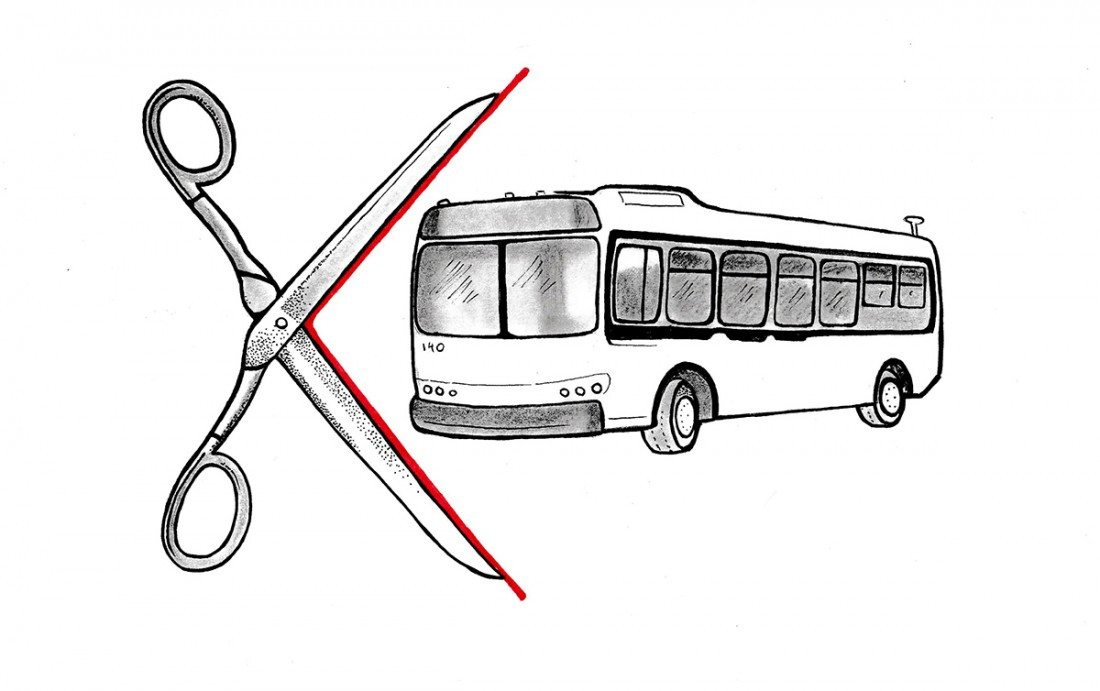Show me the numbers
U-Pass might make money for Transit, but lack of information leads to ludicrous cuts
Update: On March 19, Mayor Brian Bowman announced that the U-Pass program will no longer be cancelled.
In the last few months, Winnipeg Transit went from working with students to revise and consider expanding the U-Pass discount student plan to unceremoniously dumping the program with no explanation other than the inevitability of budget cuts.
What happened? Bad math.
This February and March, students voted to increase the amount paid for the U-Pass – at the City’s request – from $136.25 to $160.75 every four months, with subsequent increases for inflation. Adding Red River College students spreads the U-Pass to more than 32,000 students – at least $10.5 million a year for Transit.
Yet the City claims the program is losing money. How can that be?
A Nov. 21 report pegs losses at $6 million a year. On Facebook, Coun. Matt Allard suggested it will be $15 million over four years. Not only do these claims not add up, but they also lack the support of ridership data or detailed budget breakdowns that could help to parse them.
In truth, the “cost” of the program is the opportunity cost of students not paying full fare.
Transit’s budget estimates for “lost revenue” are predicated on 74 to 100 per cent of all eligible students buying postsecondary semester passes, which is unrealistic, to say the least.
Back in 2015, a report to city council showed the U-Pass makes financial sense for the city, because students were buying about $8.7 million in bus passes before the program was implemented. That works out to about 47 per cent of Winnipeg’s postsecondary students.
Why isn’t that proportion – or the real 2015 revenue – used in today’s reports to make the case against the U-Pass? Perhaps because it makes the case for keeping the program.
Frankly, there is no way that nearly 100 per cent of eligible students will pay twice as much – and for less service, with the number of new buses also cut by a third in this budget amid other service cuts.
Meanwhile, the City is introducing a low-income bus pass, which will give a vast majority of post-secondary students a different break if the U-Pass is cancelled.
The premise of the U-Pass is to push students to bus and remove upwards of 7,000 cars from the road, building a lifelong habit and dismissing the myth of the bus as a loser-cruiser.
The U-Pass amortises costs over tens of thousands of students, providing a dependable source of revenue to Transit.
In Edmonton, a study showed 50 per cent of students post-U-Pass continued to ride the bus after graduating – a substantial opportunity, if Transit were interested in building ridership.
U-Pass costs and revenues are not broken out in 2016, 2017 or 2018 Transit budget documents. What those budgets do show, however, is rising fare revenue, year after year – and the City raiding Transit surpluses for general revenues.
Do city councillors even have real cost and revenue data? Does the public service? Has anyone done the math on the U-Pass?
If so, let’s see it.
There are a lot of citizens raising concerns about cuts in this budget. They’re all important.
The incredible lack of data that thwarts this discussion affects all of these issues and calls the entire budget into question.
Published in Volume 74, Number 22 of The Uniter (March 19, 2020)








